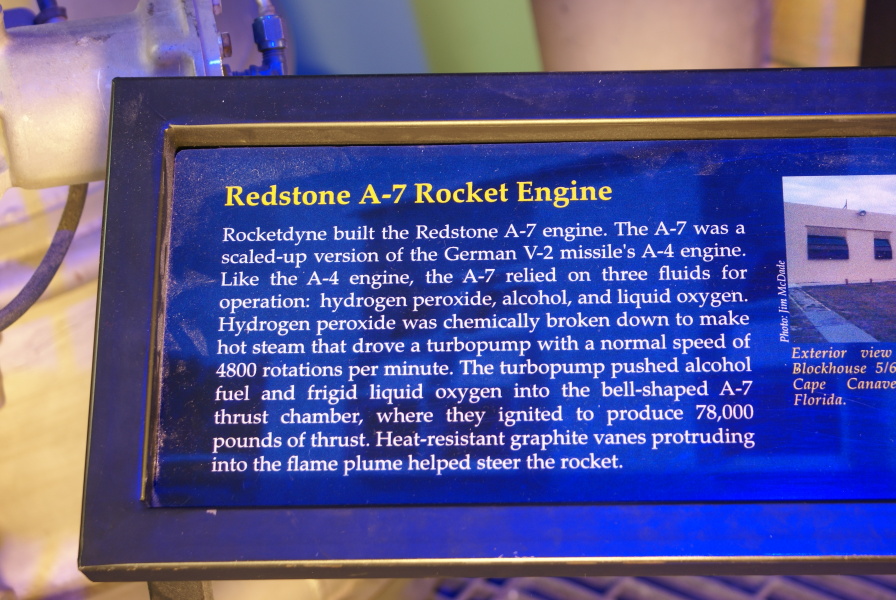| Prev |
heroicrelics.org Kansas Cosmosphere Site Index A-7 Engine Gallery |
Next |
dsca0420.jpg
The sign accompanying the engine. It reads
Redstone A-7 Rocket Engine
Rocketdyne built the Redstone A-7 engine. The A-7 was a scaled-up version of the German V-2 missile's A-4 engine. Like the A-4 engine, the A-7 relied on three fluids for operation: hydrogen peroxide, alcohol, and liquid oxygen. Hydrogen peroxide was chemically broken down to make hot steam that drove a turbopump with a normal speed of 4800 rotations per minute. The turbopump pushed alcohol fuel and frigid liquid oxygen into the bell-shaped A-7 thrust chamber, where they ignited to produce 78,000 pounds of thrust. Heat-resistant graphite vanes protruding into the flame plume helped steer the rocket.
The A-7 engine's was actually not bell-shaped, but rather conical with a 15° expansion angle. Most or all early engines, from the V-2 engine up to and including early versions of the Atlas booster engine, used the simpler conical shape.
Bell-shaped engines were not developed until the mid-1950s, when advances in computers allowed engineers to optimize the shape of rocket thrust chambers. While a long, conical shape is most efficient, such a thrust chamber is heavy. A bell-shaped thrust chamber produced nearly as much thrust for a given expansion ratio as a conical thrust chamber, but was substantially shorter -- sometimes 50% the length or even shorter.
Additionally, bell-shaped nozzles were simple to fabricate for thrust chambers comprised of regenerative cooling tubes, but would have been difficult to construct for thrust chambers using heavy, double-walled construction as on the Redstone engine.

| Time picture taken | Sat Dec 7 12:14:30 2013 |
| Location picture taken |
The Blockhouse Gallery Hall of Space Kansas Cosmosphere Hutchinson, KS |
| Prev |
heroicrelics.org Kansas Cosmosphere Site Index A-7 Engine Gallery |
Next |